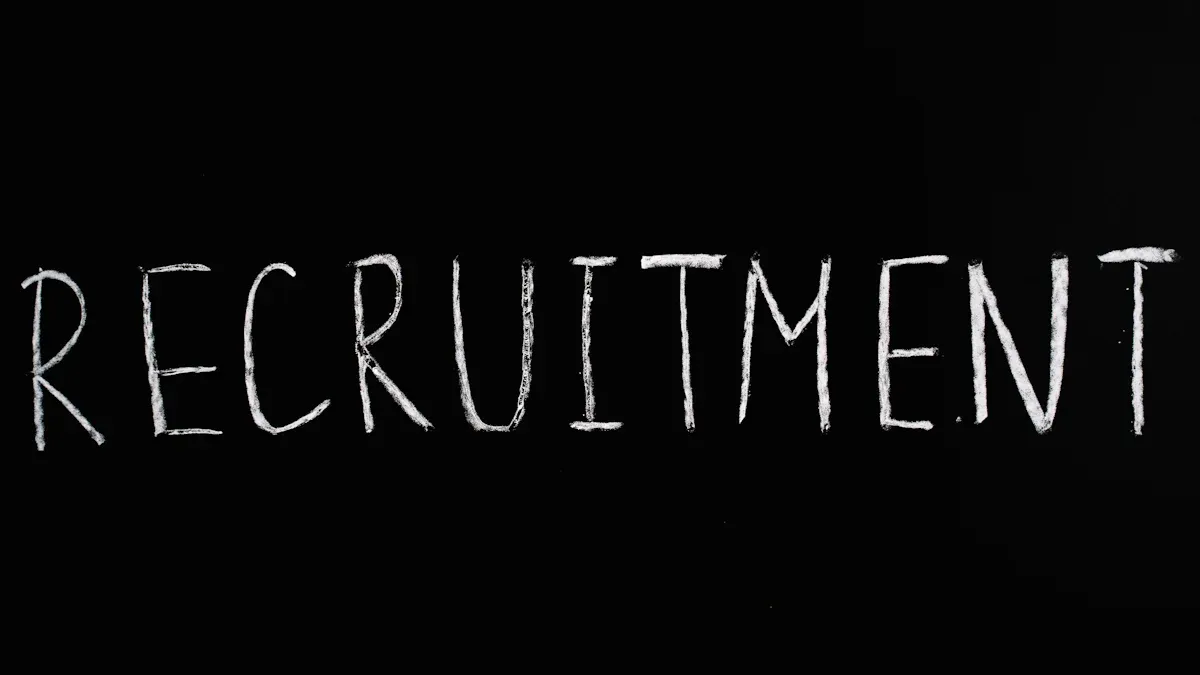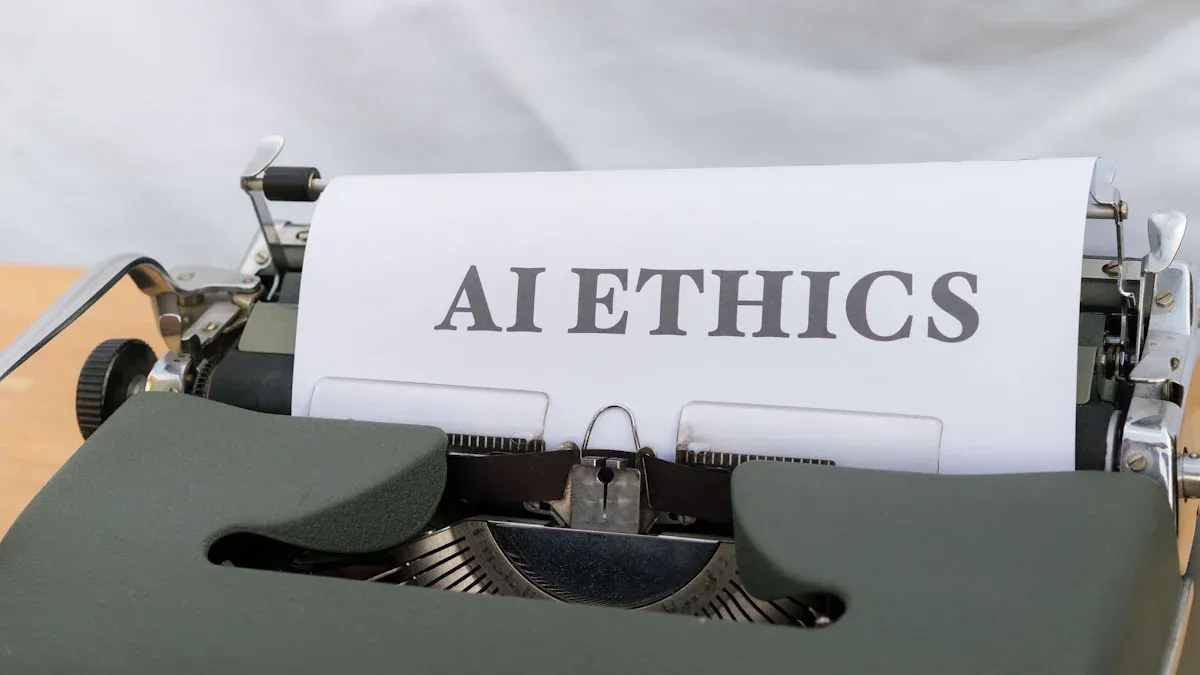How to Identify and Mitigate AI Bias in Recruitment

AI bias in recruitment occurs when automated systems favor or disadvantage certain groups based on flawed data or algorithms. This bias can harm fairness and diversity in hiring. Unchecked AI bias poses significant risks, including how to track the impact of AI on hiring bias:
It can reduce opportunities for underrepresented groups, such as women and Black candidates.
It may amplify hidden biases in human decision-making.
It can lead to non-compliance with legal standards.
Companies like Unilever have shown that auditing AI systems can improve outcomes. Their efforts increased women in management roles by 50%. You must prioritize fairness and transparency to ensure ethical recruitment practices.
Key Takeaways
AI bias in hiring can hurt fairness and diversity. Checking often helps find and fix these biases.
Using blind hiring methods can boost diversity by looking at skills, not personal details.
Adding more human checks in AI decisions improves choices and lowers bias in hiring.
Causes of AI Bias in Recruitment

Data Issues in AI Training
AI systems rely on data to learn and make decisions. When the data used for training is flawed, the system inherits those flaws. Common issues include:
Biased Training Data: If the data lacks diversity or is too small, the AI may favor certain groups over others.
Programming Biases: Developers may unintentionally embed their own biases into the algorithms, influencing how the AI interprets data.
Data Interpretation Bias: AI can misinterpret data, leading to unfair outcomes like excluding qualified candidates.
For example, if an AI system is trained on resumes from a predominantly male workforce, it may prioritize male candidates, perpetuating gender inequality. Addressing these issues requires diverse and representative training data.
Algorithmic Design and Transparency
The way algorithms are designed plays a critical role in recruitment bias. Studies show that many hiring tools unintentionally discriminate against marginalized groups. For instance, Amazon’s recruitment algorithm favored men because it was trained on historical data reflecting male-dominated hiring patterns. This highlights how design flaws can amplify existing inequalities.
You should also consider transparency. Without clear explanations of how decisions are made, it becomes difficult to identify and correct biases. Transparent algorithms help build trust and ensure fairness in hiring.
Human Influence on AI Systems
Humans play a significant role in shaping AI systems. Decisions about data selection, feature engineering, and outcome definitions can introduce bias. For example:
Factor | Impact |
|---|---|
Biased Training Data | Skewed samples can lead to discriminatory outcomes. |
Feature Selection | Poorly chosen features may misclassify candidates from underrepresented groups. |
Lack of Transparency | Candidates often don’t understand AI decisions, reducing trust in the process. |
By addressing these human-driven factors, you can reduce bias and create a more equitable recruitment process.
How to Track the Impact of AI on Hiring Bias
Conducting Regular Bias Audits
Regular audits help you identify and address biases in AI systems. These audits evaluate how AI tools perform across different demographics, ensuring fairness. For example, IBM conducted periodic audits of its AI-driven hiring system, resulting in a 30% increase in diverse hiring. Similarly, Unilever reduced hiring bias by 16% through continuous auditing of its Pymetrics tool.
To conduct effective audits, focus on metrics like selection rates, demographic representation, and fairness scores. Use statistical analyses, such as p-values and confidence intervals, to determine if AI outcomes are unbiased. Regular audits not only improve fairness but also build trust in your recruitment process.
Monitoring AI Decisions and Outcomes
Tracking AI decisions ensures that hiring tools remain effective and equitable. Continuous monitoring involves collecting data on candidate selection rates, job satisfaction, and retention. For instance, Hilton uses HireVue to enhance transparency in candidate evaluations, fostering trust among applicants.
Key metrics to monitor include workforce productivity, skill evolution, and regulatory compliance. The table below highlights these metrics:
Metric | Description |
|---|---|
Workforce Productivity | Measures efficiency and output improvements due to AI, allowing employees to focus on strategic tasks. |
Skill Evolution | Tracks the need for new competencies as AI transforms job roles, emphasizing the importance of upskilling. |
Regulatory Compliance | Ensures AI systems adhere to labor laws and ethical standards, monitoring for bias and discrimination. |
By monitoring these outcomes, you can ensure your AI tools align with organizational goals and ethical standards.
Engaging External Auditors and Ethical Committees
External auditors and ethical committees provide an unbiased perspective on your AI systems. These experts assess whether your tools comply with legal and ethical standards. They also recommend improvements to reduce bias. For example, external reviews helped IBM and Unilever refine their AI systems, leading to better hiring outcomes.
Engaging external experts ensures accountability and transparency. It also demonstrates your commitment to ethical recruitment practices. By involving these stakeholders, you can create a fairer hiring process and enhance your organization's reputation.
Strategies to Mitigate AI Bias

Enhancing Human Oversight
Human oversight plays a critical role in reducing AI bias during recruitment. By actively monitoring AI systems, you can identify and address potential issues before they escalate. Here are some effective strategies:
Rethink how job postings are structured to eliminate biased language.
Adopt ethical AI practices that emphasize human involvement in decision-making.
Train hiring teams to recognize and mitigate bias in job descriptions and candidate evaluations.
Regularly review the effectiveness of job postings to ensure they attract diverse applicants.
These steps not only improve fairness but also help you build a more inclusive hiring process. For example, training teams to identify bias can lead to more equitable outcomes and better decision-making.
Implementing Blind Recruitment Techniques
Blind recruitment removes identifiable information, such as names and photos, from applications. This approach ensures that candidates are evaluated solely on their skills and qualifications. Studies show that blind hiring can increase the number of women advancing to final selection stages by up to 50%. Additionally, research from the Harvard Business Review reveals that candidates chosen through algorithms have a 50% higher success rate on the job compared to those selected by human judgment.
By focusing on objective criteria, you can reduce unconscious bias and create a fairer recruitment process. Blind recruitment also helps you attract a wider pool of talent, fostering diversity within your organization.
Improving Diversity in Training Data and Hiring Teams
Diverse training data and hiring teams are essential for mitigating AI bias. When AI systems are trained on inclusive datasets, they make more equitable decisions. Companies using blind recruitment have reported a 32% increase in diverse hires, according to Glider.ai. Similarly, organizations that combine AI recommendations with human review experience 45% fewer biased decisions.
Unilever’s AI-driven hiring process demonstrates the benefits of diversity. The company achieved a 16% increase in hires from underrepresented groups while significantly reducing recruitment time. By improving diversity in both data and hiring teams, you can ensure that your AI systems reflect a broader range of perspectives and experiences.
Ethical Considerations in AI Recruitment
Balancing AI and Human Judgment
AI can process large amounts of data quickly, but it lacks the empathy and intuition that humans bring to recruitment. You should aim to balance AI's efficiency with human judgment to create a fair hiring process. For example, AI can screen resumes for qualifications, while humans can assess soft skills and cultural fit during interviews.
To achieve this balance, consider these steps:
Use AI for repetitive tasks like sorting applications.
Involve hiring managers in final decisions to ensure fairness.
Train your team to understand AI tools and their limitations.
By combining AI's strengths with human insight, you can reduce bias and make better hiring decisions.
Tip: Always review AI-generated recommendations to ensure they align with your organization's values and diversity goals.
Ensuring Accountability and Fairness
Accountability is essential when using AI in recruitment. You need to ensure that your systems are transparent and fair. Start by using diverse datasets to train your AI. A multinational corporation reduced biased outcomes by incorporating data from various countries and industries. This approach ensures that your AI reflects a wide range of perspectives.
You should also implement fairness metrics to measure and address bias. Metrics like equal opportunity and demographic parity help you evaluate how your AI performs across different groups. Tools like SHAP (SHapley Additive exPlanations) can highlight which features influence AI decisions, making the process more transparent.
Here are some effective accountability measures:
Regularly audit your AI systems for bias.
Share your findings with stakeholders to build trust.
Use external experts to review your processes.
By taking these steps, you can create a recruitment process that is both ethical and effective.
Addressing AI bias in recruitment ensures fairness and compliance. Studies reveal biased AI tools often favor certain groups, like male candidates, due to flawed data. Companies adopting transparent practices, such as regular audits, improve diversity by 20%. As AI evolves, balancing efficiency with ethical practices will help you create equitable hiring processes.
FAQ
What is AI bias in recruitment?
AI bias occurs when automated systems favor or disadvantage certain groups due to flawed data or algorithms. It impacts fairness, diversity, and compliance in hiring processes.
How can you identify AI bias in hiring tools?
You can identify bias by conducting audits, analyzing demographic outcomes, and monitoring AI decisions. Regular evaluations ensure fairness and uncover hidden biases in recruitment systems.
Why is blind recruitment effective in reducing bias?
Blind recruitment removes personal identifiers like names or photos. This approach ensures candidates are judged solely on skills, reducing unconscious bias and promoting diversity in hiring.
See Also
Utilizing AI For Fairness In Recruitment Processes
Leveraging AI Tools To Anticipate Candidate Performance
How AI Recruitment Tools Transform Contemporary Hiring Methods
Creating Predictive Models With AI Hiring Solutions
Achieving Recruitment Excellence Through AI: MokaHR's Strategy
From recruiting candidates to onboarding new team members, MokaHR gives your company everything you need to be great at hiring.
Subscribe for more information

